
Keywords: cytoplasmic incompatibility
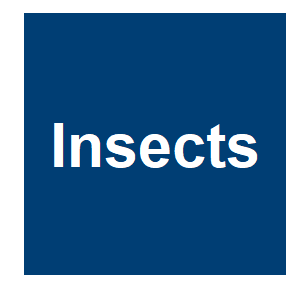
|
Wolbachia Infection through Hybridization to Enhance an Incompatible Insect Technique-Based Suppression of Aedes albopictus in Eastern SpainCholvi, M.; Trelis, M.; Bueno-Marí, R.; Khoubbane, M.; Gil, R.; Marcilla, A.; Moretti, R., Insects, 15:206. 2024.
The emergence of insecticide resistance in arbovirus vectors is putting the focus on the development of new strategies for control. In this regard, the exploitation of Wolbachia endosymbionts is receiving increasing attention due to its demonstrated effectiveness in reducing the ... Keywords: cytoplasmic incompatibility, Drosophila simulans, mechanisms, spermiogenesis, wolbachia |

|
Wolbachia Infection through Hybridization to Enhance an Incompatible Insect Technique-Based Suppression of Aedes albopictus in Eastern SpainCholvi M, Trelis M, Bueno-Marí R, Khoubbane M, Gil R, Marcilla A, Moretti R., Insects, 15. 2024.
Wolbachia bacteria occur naturally as symbionts of many insect species and are responsible for various phenomena that modify the hosts’ reproductive biology. Among them, cytoplasmic incompatibility (CI) refers to the sterility of eggs produced by crosses between infected males ... Keywords: cytoplasmic incompatibility, Drosophila simulans, mechanisms, spermiogenesis, wolbachia |
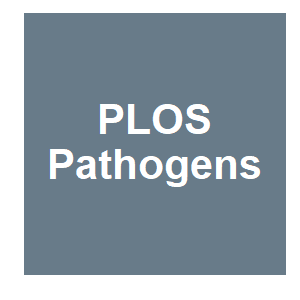
|
The Wolbachia WalE1 effector alters Drosophila endocytosisMaryAnn Martin,Sergio López-Madrigal,Irene L. G. Newton, PLoS Pathogens, 20. 2024.
The most common intracellular bacterial infection is Wolbachia pipientis. Keywords: cytoplasmic incompatibility, Drosophila simulans, mechanisms, spermiogenesis, wolbachia |

|
Prophage proteins alter long noncoding RNA and DNA of developing sperm to induce a paternal-effect lethalityRupinder Kaur et al., Science, 383:1111-1117. 2024.
Many arthropods carry symbiotic bacteria. Some, including Wolbachia strains, have the capacity to cause male sterility. Keywords: cytoplasmic incompatibility, Drosophila simulans, mechanisms, spermiogenesis, wolbachia |
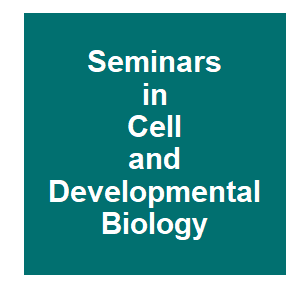
|
PSRs: Selfish chromosomes that manipulate reproductive developmentXinmi Zhang, Patrick M. Ferree, Seminars in Cell and Developmental Biology, 159-160:66-73. 2024.
B chromosomes are intriguing “selfish” genetic elements, many of which exhibit higher-than-Mendelian transmission. This perspective highlights a group of B chromosomes known as Paternal Sex Ratio chromosomes (PSRs), which are found in several insects with haplo-diploid ... Keywords: cytoplasmic incompatibility, Drosophila simulans, mechanisms, spermiogenesis, wolbachia |
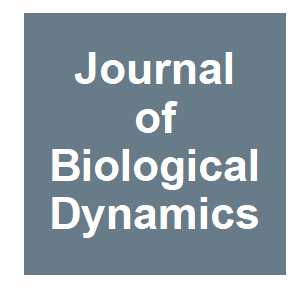
|
Modelling and analysis of periodic impulsive releases of the Nilaparvata lugens infected with wStri-WolbachiaXiangjun Dai, Qi Quan & Jianjun Jiao, Journal of Biological Dynamics, 17:1. 2023.
In this paper, we formulate a population suppression model and a population replacement model with periodic impulsive releases of Nilaparvata lugens infected with wStri. The conditions for the stability of wild-N.lugens -eradication periodic solution of two systems are obtained ... Keywords: cytoplasmic incompatibility, Drosophila simulans, mechanisms, spermiogenesis, wolbachia |

|
Wolbachia endosymbionts manipulate the self-renewal and differentiation of germline stem cells to reinforce fertility of their fruit fly hostS. L. Russell, J. R. Castillo and W. T. Sullivan, PLOS Biology, 21:e3002335. 2023.
The alphaproteobacterium Wolbachia pipientis infects arthropod and nematode species worldwide, making it a key target for host biological control. Wolbachia-driven host reproductive manipulations, such as cytoplasmic incompatibility (CI), are credited for catapulting these ... Keywords: cytoplasmic incompatibility, Drosophila simulans, mechanisms, spermiogenesis, wolbachia |

|
How mosquito-controlling bacteria might also enhance insect fertilityPublic Library of Science, Phys Org, 2023.
A new study reveals biological mechanisms by which a specific strain of bacteria in the Wolbachia genus might enhance the fertility of the insects it infects—with potentially important implications for mosquito-control strategies. Shelbi Russell of the University of California ... Keywords: cytoplasmic incompatibility, Drosophila simulans, mechanisms, spermiogenesis, wolbachia |

|
Wolbachia infection at least partially rescues the fertility and ovary defects of several new Drosophila melanogaster bag of marbles protein-coding mutantsM. Wenzel and C. F. Aquadro, PLOS Genetics, 19:e1011009. 2023.
Author summary Reproduction in the Drosophila melanogaster fruit fly is dependent on the bag of marbles (bam) gene, which acts early in the process of generating eggs and sperm. Mutations to this gene negatively impact the fertility of the fly, causing it to be sterile or have ... Keywords: cytoplasmic incompatibility, Drosophila simulans, mechanisms, spermiogenesis, wolbachia |

|
Wolbachia Induces Structural Defects Harmful to Drosophila simulans Riverside Spermiogenesis.M. G. Riparbelli, A. Pratelli and G. Callaini, Cells, 12. 2023.
The relationship between cytoplasmic incompatibility and the obligate intracellular alphaproteobacteria Wolbachia has for a long time been reported. Although the molecular mechanisms responsible for this reproductive alteration are beginning to be understood, the effects of ... Keywords: cytoplasmic incompatibility, Drosophila simulans, mechanisms, spermiogenesis, wolbachia |

|
First Detection and Genetic Identification of Wolbachia Endosymbiont in Field-Caught Aedes aegypti (Diptera: Culicidae) Mosquitoes Collected from Southern TaiwanL.-L. Chao and C.-M. Shih, Microorganisms, 11. 2023.
The prevalence and genetic character of Wolbachia endosymbionts in field-collected Aedes aegypti mosquitoes were examined for the first time in Taiwan. A total of 665 Ae. aegypti were screened for Wolbachia infection using a PCR assay targeting the Wolbachia surface protein (wsp) ... Keywords: cytoplasmic incompatibility, Drosophila simulans, mechanisms, spermiogenesis, wolbachia |

|
N. Wybouw, E. Van Reempts, J. Zarka, F. Zélé and D. Bonte, Heredity, 2023.
Maternally transmitted symbionts such as Wolbachia can alter sex allocation in haplodiploid arthropods. By biasing population sex ratios towards females, these changes in sex allocation may facilitate the spread of symbionts. In contrast to symbiont-induced cytoplasmic ... Keywords: cytoplasmic incompatibility, Drosophila simulans, mechanisms, spermiogenesis, wolbachia |

|
The cellular lives of WolbachiaJ. Porter and W. Sullivan, Nature Reviews Microbiology, 2023.
Wolbachia are successful Gram-negative bacterial endosymbionts, globally infecting a large fraction of arthropod species and filarial nematodes. Efficient vertical transmission, the capacity for horizontal transmission, manipulation of host reproduction and enhancement of host ... Keywords: cytoplasmic incompatibility, Drosophila simulans, mechanisms, spermiogenesis, wolbachia |

|
Modeling emergence of Wolbachia toxin-antidote protein functions with an evolutionary algorithmJ. Beckmann, J. Gillespie and D. Tauritz, Front Microbiol, 14:1116766. 2023.
Evolutionary algorithms (EAs) simulate Darwinian evolution and adeptly mimic natural evolution. Most EA applications in biology encode high levels of abstraction in top-down population ecology models. In contrast, our research merges protein alignment algorithms from ... Keywords: cytoplasmic incompatibility, Drosophila simulans, mechanisms, spermiogenesis, wolbachia |

|
Molecular Biology of Cytoplasmic Incompatibility Caused by Wolbachia EndosymbiontsM. Hochstrasser, Annual Review of Microbiology, 2023.
Among endosymbiotic bacteria living within eukaryotic cells, Wolbachia is exceptionally widespread, particularly in arthropods. Inherited through the female germline, it has evolved ways to increase the fraction of bacterially infected offspring by inducing parthenogenesis, ... Keywords: cytoplasmic incompatibility, Drosophila simulans, mechanisms, spermiogenesis, wolbachia |
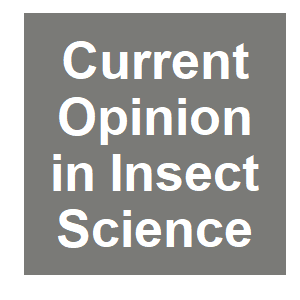
|
Wolbachia-based strategies for control of agricultural pestsJ. T. Gong, T. P. Li, M. K. Wang and X. Y. Hong, Curr Opin Insect Sci, 101039:10.1016/j.cois.2023.101039. 2023.Wolbachia-based incompatible insect technique (IIT) and pathogen blocking technique (PBT) have been shown to be effective at protecting humans from mosquito-borne diseases in the past decades. Population suppression based on IIT and population replacement based on PBT have become ... Keywords: cytoplasmic incompatibility, Drosophila simulans, mechanisms, spermiogenesis, wolbachia |

|
One strain may hide another: Cryptic male-killing WolbachiaE. A. Hornett and G. D. D. Hurst, PLOS Biology, 21:e3002076. 2023.
While heritable symbionts are common in insects, strains that act as male-killers are considered rare. This Primer explores a new study in PLOS Biology which reveals a novel male-killer hidden by co-infection and host resistance, highlighting the complexity of host-microbial ... Keywords: cytoplasmic incompatibility, Drosophila simulans, mechanisms, spermiogenesis, wolbachia |

|
Modelling Emergence of Wolbachia Toxin-Antidote Protein Functions with an Evolutionary AlgorithmJ. Beckmann, J. Gillespie and D. Tauritz, bioRxiv, 2023.
Evolutionary algorithms (EAs) simulate Darwinian evolution and adeptly mimic natural evolution. Most EA applications in biology encode high levels of abstraction in top-down ecological population models. In contrast, our research merges protein alignment algorithms from ... Keywords: cytoplasmic incompatibility, Drosophila simulans, mechanisms, spermiogenesis, wolbachia |

|
A male-killing Wolbachia endosymbiont is concealed by another endosymbiont and a nuclear suppressorK. M. Richardson, P. A. Ross, B. S. Cooper, W. R. Conner, T. Schmidt and A. A. Hoffmann, PLoS Biol, 21:e3001879. 2023.
Bacteria that live inside the cells of insect hosts (endosymbionts) can alter the reproduction of their hosts, including the killing of male offspring (male killing, MK). MK has only been described in a few insects, but this may reflect challenges in detecting MK rather than its ... Keywords: cytoplasmic incompatibility, Drosophila simulans, mechanisms, spermiogenesis, wolbachia |
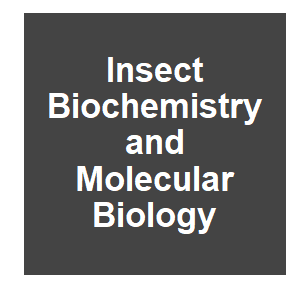
|
Convergent Aedes and Drosophila CidB interactomes suggest cytoplasmic incompatibility targets are conservedS. O. Oladipupo, J. D. Carroll and J. F. Beckmann, Insect Biochem Mol Biol, 103931. 2023.
Wolbachia-mediated cytoplasmic incompatibility (CI) is a conditional embryonic lethality induced when Wolbachia-modified sperm fertilizes an uninfected egg. The Wolbachia proteins, CidA and CidB control CI. CidA is a rescue factor that reverses lethality. CidA binds to CidB. CidB ... Keywords: cytoplasmic incompatibility, Drosophila simulans, mechanisms, spermiogenesis, wolbachia |

|
Functional analysis of Wolbachia Cid effectors unravels cooperative interactions to target host chromatin during replicationK. Terretaz, B. Horard, M. Weill, B. Loppin and F. Landmann, PLOS Pathogens, 19:e1011211. 2023.
Wolbachia are common bacteria among terrestrial arthropods. These endosymbionts transmitted through the female germline manipulate their host reproduction through several mechanisms whose most prevalent form called Cytoplasmic Incompatibility -CI- is a conditional sterility ... Keywords: cytoplasmic incompatibility, Drosophila simulans, mechanisms, spermiogenesis, wolbachia |
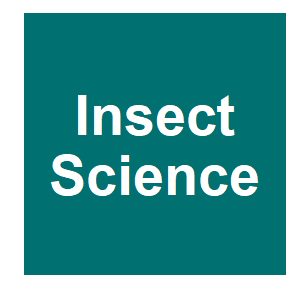
|
NDUFA8 potentially rescues Wolbachia-induced cytoplasmic incompatibility in Laodelphax striatellusJ. Chen, M. K. Wang, Q. X. Xie, X. L. Bing, T. P. Li and X. Y. Hong, Insect Sci, 2023.
The endosymbiont Wolbachia manipulates host reproduction by several strategies, one of the most important of which is cytoplasmic incompatibility (CI). CI can be rescued when Wolbachia-infected (WI) males mate with females infected with the same Wolbachia strain. However, the ... Keywords: cytoplasmic incompatibility, Drosophila simulans, mechanisms, spermiogenesis, wolbachia |

|
Pangenomic analysis of Wolbachia provides insight into the evolution of host adaptation and cytoplasmic incompatibility factor genesB. Liu, Y. S. Ren, C. Y. Su, Y. Abe and D. H. Zhu, Frontiers in Microbiology, 14:1084839. 2023.
INTRODUCTION: The genus Wolbachia provides a typical example of intracellular bacteria that infect the germline of arthropods and filarial nematodes worldwide. Their importance as biological regulators of invertebrates, so it is particularly important to study the evolution, ... Keywords: cytoplasmic incompatibility, Drosophila simulans, mechanisms, spermiogenesis, wolbachia |

|
Developing Wolbachia-based disease interventions for an extreme environmentP. A. Ross, S. Elfekih, S. Collier, M. J. Klein, S. S. Lee, M. Dunn, S. Jackson, Y. Zhang, J. K. Axford, X. Gu, J. L. Home, M. S. Nassar, P. N. Paradkar, E. A. Tawfik, F. M. Jiggins, A. M. Almalik, M. B. Al-Fageeh and A. A. Hoffmann, PLoS Pathogens, 19:e1011117. 2023.
Aedes aegypti mosquitoes carrying self-spreading, virus-blocking Wolbachia bacteria are being deployed to suppress dengue transmission. However, there are challenges in applying this technology in extreme environments. We introduced two Wolbachia strains into Ae. aegypti from ... Keywords: cytoplasmic incompatibility, Drosophila simulans, mechanisms, spermiogenesis, wolbachia |

|
Harnessing Wolbachia cytoplasmic incompatibility alleles for confined gene drive: A modeling studyJ. Li and J. Champer, PLOS Genetics, 19:e1010591. 2023.
Wolbachia are maternally-inherited bacteria, which can spread rapidly in populations by manipulating reproduction. cifA and cifB are genes found in Wolbachia phage that are responsible for cytoplasmic incompatibility, the most common type of Wolbachia reproductive interference. ... Keywords: cytoplasmic incompatibility, Drosophila simulans, mechanisms, spermiogenesis, wolbachia |

|
Single-cell transcriptome sequencing reveals Wolbachia-mediated modification in early stages of Drosophila spermatogenesisW. Dou, B. Sun, Y. Miao, D. Huang and J. Xiao, Proceedings of the Royal Society B: Biological Sciences, 290:20221963. 2023.
Wolbachia are the most widely distributed intracellular bacteria, and their most common effect on host phenotype is cytoplasmic incompatibility (CI). A variety of models have been proposed to decipher the molecular mechanism of CI, among which the host modification (HM) model ... Keywords: cytoplasmic incompatibility, Drosophila simulans, mechanisms, spermiogenesis, wolbachia |

|
Single-cell transcriptome sequencing reveals Wolbachia-mediated modification in early stages of Drosophila spermatogenesisW. Dou, B. Sun, Y. Miao, D. Huang and J. Xiao, Proceedings of the Royal Society B: Biological Sciences, 290:20221963. 2023.
Wolbachia are the most widely distributed intracellular bacteria, and their most common effect on host phenotype is cytoplasmic incompatibility (CI). A variety of models have been proposed to decipher the molecular mechanism of CI, among which the host modification (HM) model ... Keywords: cytoplasmic incompatibility, Drosophila simulans, mechanisms, spermiogenesis, wolbachia |

|
Wolbachia endosymbionts manipulate GSC self-renewal and differentiation to enhance host fertilityS. L. Russell, J. R. Castillo and W. T. Sullivan, bioRxiv, 2022.12.15.520626. 2022.
The alphaproteobacterium Wolbachia pipientis infects thousands of arthropod and nematode species worldwide, making it a key target for host biological control. Wolbachia-driven host reproductive manipulations, such as cytoplasmic incompatibility (CI), are often credited for ... Keywords: cytoplasmic incompatibility, Drosophila simulans, mechanisms, spermiogenesis, wolbachia |
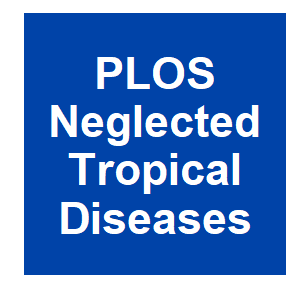
|
Independent evaluation of Wolbachia infected male mosquito releases for control of Aedes aegypti in Harris County, Texas, using a Bayesian abundance estimatorS. Lozano, K. Pritts, D. Duguma, C. Fredregill and R. Connelly, PLOS Neglected Tropical Diseases, 16:e0010907. 2022.
Among disease vectors, Aedes aegypti (L.) (Diptera: Culicidae) is one of the most insidious species in the world. The disease burden created by this species has dramatically increased in the past 50 years, and during this time countries have relied on pesticides for control and ... Keywords: cytoplasmic incompatibility, Drosophila simulans, mechanisms, spermiogenesis, wolbachia |

|
Independent evaluation of Wolbachia infected male mosquito releases for control of Aedes aegypti in Harris County, Texas, using a Bayesian abundance estimatorS. Lozano, K. Pritts, D. Duguma, C. Fredregill and R. Connelly, PLOS Neglected Tropical Diseases, 16:e0010907. 2022.
Author summary Aedes aegypti is one of the most important mosquito species because females can potentially carry pathogens that cause disease. These diseases have a tremendous impact worldwide making this species an important target of control. We evaluated a mosquito control ... Keywords: cytoplasmic incompatibility, Drosophila simulans, mechanisms, spermiogenesis, wolbachia |

|
Hidden endosymbionts: A male-killer concealed by another endosymbiont and a nuclear suppressorK. M. Richardson, P. A. Ross, B. S. Cooper, W. R. Conner, T. Schmidt and A. A. Hoffmann, bioRxiv, 2022.10.19.512817. 2022.
Maternally transmitted endosymbiotic bacteria that cause male killing (MK) have only been described from a few insects, but this may reflect challenges in their detection rather than a rarity of MK. Here we identify MK Wolbachia in populations of Drosophila pseudotakahashii, ... Keywords: cytoplasmic incompatibility, Drosophila simulans, mechanisms, spermiogenesis, wolbachia |

|
Wolbachia Biology, Mechanisms and Applications 2022David O'Brochta, GeneConvene Global Collaborative, 2022.
Intracellular and extracellular symbiotic/commensal bacteria have enormous potential when manipulated and deployed appropriately to serve as agents of control of insects and the pathogens they transmit. Wolbachia, an intracellular bacteria, is a well studied system and one that ... Keywords: cytoplasmic incompatibility, Drosophila simulans, mechanisms, spermiogenesis, wolbachia |

|
Wolbachia-Virus interactions and arbovirus control through population replacement in mosquitoesT. H. Ant, M. V. Mancini, C. J. McNamara, S. M. Rainey and S. P. Sinkins, Pathogens and Global Health, 2022.
Following transfer into the primary arbovirus vector Aedes aegypti, several strains of the intracellular bacterium Wolbachia have been shown to inhibit the transmission of dengue, Zika, and chikungunya viruses, important human pathogens that cause significant morbidity and ... Keywords: cytoplasmic incompatibility, Drosophila simulans, mechanisms, spermiogenesis, wolbachia |

|
Estimating the effect of the wMel release programme on the incidence of dengue and chikungunya in Rio de Janeiro, Brazil: a spatiotemporal modelling studyG. Ribeiro dos Santos, B. Durovni, V. Saraceni, T. I. Souza Riback, S. B. Pinto, K. L. Anders, et al., The Lancet Infectious Diseases, 2022.
Summary Background Introgression of genetic material from species of the insect bacteria Wolbachia into populations of Aedes aegypti mosquitoes has been shown in randomised and non-randomised trials to reduce the incidence of dengue; however, evidence for the real-world ... Keywords: cytoplasmic incompatibility, Drosophila simulans, mechanisms, spermiogenesis, wolbachia |

|
Wolbachia action in the sperm produces developmentally deferred chromosome segregation defects during the Drosophila mid-blastula transitionB. Warecki, S. W. A. Titen, M. S. Alam, G. Vega, N. Lemseffer, K. Hug, et al., eLife, 11:e81292. 2022.
Wolbachia, a vertically transmitted endosymbiont infecting many insects, spreads rapidly through uninfected populations by a mechanism known as cytoplasmic incompatibility (CI). In CI, a paternally delivered modification of the sperm leads to chromatin defects and lethality ... Keywords: cytoplasmic incompatibility, Drosophila simulans, mechanisms, spermiogenesis, wolbachia |

|
Wolbachia strain wAlbB remains stable in Aedes aegypti over 15 years but exhibits genetic background-dependent variation in virus blockingX. Liang, C. H. Tan, Q. Sun, M. Zhang, P. J. Wong, M. I. Li, et al., PNAS Nexus, 2022.
The ability of the maternally transmitted endosymbiotic bacterium Wolbachia to induce cytoplasmic incompatibility (CI) and virus blocking makes it a promising weapon for combatting mosquito-borne diseases through either suppression or replacement of wild-type populations. Recent ... Keywords: cytoplasmic incompatibility, Drosophila simulans, mechanisms, spermiogenesis, wolbachia |

|
Bacterial supergroup-specific “cost” of Wolbachia infections in Nasonia vitripennisA. Tiwary, R. Babu, R. Sen and R. Raychoudhury, Ecology and Evolution, 2022.
Abstract The maternally inherited endosymbiont, Wolbachia, is known to alter the reproductive biology of its arthropod hosts for its own benefit and can induce both positive and negative fitness effects in many hosts. Here, we describe the effects of the maintenance of two ... Keywords: cytoplasmic incompatibility, Drosophila simulans, mechanisms, spermiogenesis, wolbachia |
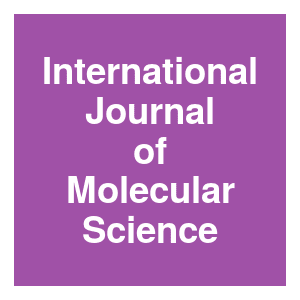
|
Comparative Ubiquitome Analysis Reveals Deubiquitinating Effects Induced by Wolbachia Infection in Drosophila melanogasterQ. Zong, B. Mao, H. B. Zhang, B. Wang, W. J. Yu, Z. W. Wang and Y. F. Wang, International Journal Molecular Science, 23. 2022.
The endosymbiotic Wolbachia bacteria frequently cause cytoplasmic incompatibility (CI) in their insect hosts, where Wolbachia-infected males cross with uninfected females, leading to no or fewer progenies, indicating a paternal modification by Wolbachia. Recent studies have ... Keywords: cytoplasmic incompatibility, Drosophila simulans, mechanisms, spermiogenesis, wolbachia |

|
Harnessing Wolbachia cytoplasmic incompatibility alleles for confined gene drive: a modeling studyJ. Li and J. Champer, bioRxiv, 2022.08.09.503337. 2022.
By using both mathematical and simulation models, we found that a drive containing CifA and CifB together create a confined drive with a moderate to high introduction threshold. When introduced separately, they act as a self-limiting drive. We observed that the performance of ... Keywords: cytoplasmic incompatibility, Drosophila simulans, mechanisms, spermiogenesis, wolbachia |

|
Developing Wolbachia-based disease interventions for an extreme environmentP. A. Ross, S. Elfekih, S. Collier, M. J. Klein, S. S. Lee, M. Dunn, S. Jackson, Y. Zhang, J. K. Axford, X. Gu, M. S. Nasar, P. N. Paradkar, E. A. Taoufik, F. M. Jiggins, A. M. Almalik, M. B. Al-Fageeh and A. A. Hoffmann, bioRxiv, 2022.07.26.501527. 2022.
Aedes aegypti mosquitoes carrying self-spreading, virus-blocking Wolbachia bacteria are being deployed to suppress dengue transmission. However, there are challenges in applying this technology in extreme environments. We introduced two Wolbachia strains into Ae. aegypti from ... Keywords: cytoplasmic incompatibility, Drosophila simulans, mechanisms, spermiogenesis, wolbachia |

|
Attempts to use breeding approaches in Aedes aegypti to create lines with distinct and stable relative Wolbachia densitiesA. J. Mejia, L. Jimenez, H. L. C. Dutra, R. Perera and E. A. McGraw, Heredity, 2022.
Wolbachia is an insect endosymbiont being used for biological control in the mosquito Aedes aegypti because it causes cytoplasmic incompatibility (CI) and limits viral replication of dengue, chikungunya, and Zika viruses. While the genetic mechanism of pathogen blocking (PB) is ... Keywords: cytoplasmic incompatibility, Drosophila simulans, mechanisms, spermiogenesis, wolbachia |

|
cifB-transcript levels largely explain cytoplasmic incompatibility variation across divergent WolbachiaJ. D. Shropshire, E. Hamant, W. R. Conner and B. S. Cooper, PNAS Nexus, 2022.
Divergent hosts often associate with intracellular microbes that influence their fitness. Maternally transmitted Wolbachia bacteria are the most common of these endosymbionts due largely to cytoplasmic incompatibility (CI) that kills uninfected embryos fertilized by ... Keywords: cytoplasmic incompatibility, Drosophila simulans, mechanisms, spermiogenesis, wolbachia |
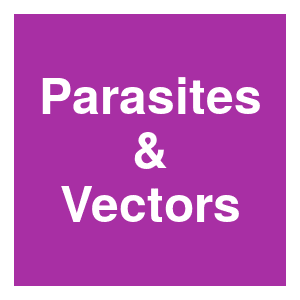
|
Sensitivity of wMel and wAlbB Wolbachia infections in Aedes aegypti Puducherry (Indian) strains to heat stress during larval developmentK. Gunasekaran, C. Sadanandane, D. Panneer, A. Kumar, M. Rahi, S. Dinesh, B. Vijayakumar, M. Krishnaraja, S. K. Subbarao and P. Jambulingam, Parasites and Vectors, 15:221. 2022.
BACKGROUND: ICMR-Vector Control Research Centre, Puducherry, India, developed two colonies of Aedes aegypti infected with wMel and wAlbB Wolbacia strains called Ae. aegypti (Pud) lines for dengue control. The sensitivity of wMel and wAlbB strains in Ae. aegypti (Pud) lines to ... Keywords: cytoplasmic incompatibility, Drosophila simulans, mechanisms, spermiogenesis, wolbachia |

|
Male-killing-associated bacteriophage WO identified from comparisons of Wolbachia endosymbionts of Homona magnanimaH. Arai, H. Anbutsu, Y. Nishikawa, M. Kogawa, K. Ishii, M. Hosokawa, S.-R. Lin, M. Ueda, M. Nakai, Y. Kunimi, T. Harumoto, D. Kageyama, H. Takeyama and M. N. Inoue, bioRxiv, 2022.
The origin and mechanism of male-killing, an advantageous strategy employed by maternally transmitted symbionts such as Wolbachia, remain unclear. We compared genomes of four Wolbachia strains derived from Homona magnanima, a male-killing strain wHm-t (1.5 Mb), and three ... Keywords: cytoplasmic incompatibility, Drosophila simulans, mechanisms, spermiogenesis, wolbachia |

|
Mosquito control to save Hawaiian honeycreepers does not involve GMOsDepartment of Land and Natural Resources, Hawaii Department of Land and Natural Resources, 2022.
Despite misinformation circulating on social media, the importation of “incompatible-male” mosquitoes to control populations of wild mosquitoes and to save four native bird species from extinction, does not involve the use of any genetically modified organisms (GMOs) or ... Keywords: cytoplasmic incompatibility, Drosophila simulans, mechanisms, spermiogenesis, wolbachia |

|
Establishment of Wolbachia infection in Aedes aegypti from Pakistan via embryonic microinjection and semi-field evaluation of general fitness of resultant mosquito populationM. S. Sarwar, N. Jahan, A. Ali, H. K. Yousaf and I. Munzoor, Parasites and Vectors, 15:191. 2022.
BACKGROUND: Dengue is a mosquito-borne viral disease that is mainly spread by Aedes aegypti. It is prevalent on five continents, predominantly in tropical and sub-tropical zones across the world. Wolbachia bacteria have been extensively used in vector control strategies ... Keywords: cytoplasmic incompatibility, Drosophila simulans, mechanisms, spermiogenesis, wolbachia |

|
Perplexing dynamics of Wolbachia proteins for cytoplasmic incompatibilityT. Harumoto and T. Fukatsu, PLOS Biology, 20:e3001644. 2022.
The mechanism of symbiont-induced cytoplasmic incompatibility has been a long-lasting mystery. This Primer explores a new study on Wolbachia’s Cif proteins in PLOS Biology that provides supportive evidence for the “Host-Modification Model,” although the alternative ... Keywords: cytoplasmic incompatibility, Drosophila simulans, mechanisms, spermiogenesis, wolbachia |

|
The Cif proteins from Wolbachia prophage WO modify sperm genome integrity to establish cytoplasmic incompatibilityR. Kaur, B. A. Leigh, I. T. Ritchie and S. R. Bordenstein, PLOS Biology, 20:e3001584. 2022.
In Drosophila melanogaster, germline expression of the Wolbachia proteins CifA and CifB causes cytoplasmic incompatibility, but how this impairs male reproduction remains unclear. This study shows how Cif proteins encoded by the endosymbiont prophage invade the fly’s gametic ... Keywords: cytoplasmic incompatibility, Drosophila simulans, mechanisms, spermiogenesis, wolbachia |

|
Strategies to Mitigate Establishment under the Wolbachia Incompatible Insect TechniqueS. Soh, S. H. Ho, J. Ong, A. Seah, B. S. Dickens, K. W. Tan, J. R. Koo, A. R. Cook, S. Sim, C. H. Tan, L. C. Ng and J. T. Lim, Viruses, 14. 2022.
The Incompatible Insect Technique (IIT) strategy involves the release of male mosquitoes infected with the bacterium Wolbachia. Regular releases of male Wolbachia-infected mosquitoes can lead to the suppression of mosquito populations, thereby reducing the risk of transmission of ... Keywords: cytoplasmic incompatibility, Drosophila simulans, mechanisms, spermiogenesis, wolbachia |

|
Cytoplasmic incompatibility: A Wolbachia toxin–antidote mechanism comes into viewM. Hochstrasser, Current Biology, 32:R287-R289. 2022.
The Wolbachia cidA and cidB genes promote bacterial endosymbiont inheritance through the host female germline. CidB is now shown to load into maturing sperm nuclei. Following fertilization, it disrupts paternal chromosome condensation, triggering embryonic arrest if not countered ... Keywords: cytoplasmic incompatibility, Drosophila simulans, mechanisms, spermiogenesis, wolbachia |

|
Uniqueness and stability of periodic solutions for an interactive wild and Wolbachia-infected male mosquito modelR. Yan and Q. Sun, Journal of Biological Dynamics, 2022.
We investigate a mosquito population suppression model, which includes the release of Wolbachia-infected males causing incomplete cytoplasmic incompatibility (CI). The model consists of two sub-equations by considering the density-dependent birth rate of wild mosquitoes. By ... Keywords: cytoplasmic incompatibility, Drosophila simulans, mechanisms, spermiogenesis, wolbachia |

|
Quality over quantity: unraveling the contributions to cytoplasmic incompatibility caused by two coinfecting Cardinium symbiontsM. R. Doremus, C. M. Stouthamer, S. E. Kelly, S. Schmitz-Esser and M. S. Hunter, Heredity, 2022.
Cytoplasmic incompatibility (CI) is a common form of reproductive sabotage caused by maternally inherited bacterial symbionts of arthropods. CI is a two-step manipulation: first, the symbiont modifies sperm in male hosts which results in the death of fertilized, uninfected ... Keywords: cytoplasmic incompatibility, Drosophila simulans, mechanisms, spermiogenesis, wolbachia |

|
Endosymbionts moderate constrained sex allocation in a haplodiploid thrips species in a temperature-sensitive wayA. Katlav, D. T. Nguyen, J. L. Morrow, R. N. Spooner-Hart and M. Riegler, Heredity, 9. 2022.
Maternally inherited bacterial endosymbionts that affect host fitness are common in nature. Some endosymbionts colonise host populations by reproductive manipulations (such as cytoplasmic incompatibility; CI) that increase the reproductive fitness of infected over uninfected ... Keywords: cytoplasmic incompatibility, Drosophila simulans, mechanisms, spermiogenesis, wolbachia |

|
Paternal transmission of the Wolbachia CidB toxin underlies cytoplasmic incompatibilityB. Horard, K. Terretaz, A. S. Gosselin-Grenet, H. Sobry, M. Sicard, F. Landmann and B. Loppin, Current Biology, 2022.
Wolbachia are widespread endosymbiotic bacteria that manipulate the reproduction of arthropods through a diversity of cellular mechanisms. In cytoplasmic incompatibility (CI), a sterility syndrome originally discovered in the mosquito Culex pipiens, uninfected eggs fertilized by ... Keywords: cytoplasmic incompatibility, Drosophila simulans, mechanisms, spermiogenesis, wolbachia |

|
Cytoplasmic incompatibility in hybrid zones: infection dynamics and resistance evolutionE. S. Røed and J. Engelstädter, Journal of Evolutionary Biology, 2021.
Cytoplasmic incompatibility is an endosymbiont-induced mating incompatibility common in arthropods. Unidirectional cytoplasmic incompatibility impairs crosses between infected males and uninfected females, whereas bidirectional cytoplasmic incompatibility occurs when two host ... Keywords: cytoplasmic incompatibility, Drosophila simulans, mechanisms, spermiogenesis, wolbachia |

|
From Wolbachia genomics to phenotype: molecular models of cytoplasmic incompatibility must account for the multiplicity of compatibility typesA. Namias, M. Sicard, M. Weill and S. Charlat, Current Opinion in Insect Science, 2021.
Wolbachia endosymbionts commonly induce cytoplasmic incompatibility, making infected males’ sperm lethal to the embryos unless these are rescued by the same bacterium, inherited from their mother. Causal genes were recently identified but two families of mechanistic models are ... Keywords: cytoplasmic incompatibility, Drosophila simulans, mechanisms, spermiogenesis, wolbachia |

|
Wolbachia Endosymbiont and Mosquito Vectors, with Emphasis on Lymphatic Filariasis EliminationI. P. Sunish, Genetically Modified and other Innovative Vector Control Technologies, 2021.
Wolbachia are maternally inherited intracellular bacteria, known to alter early development and mitotic processes in their hosts. They are frequently observed as a reproductive parasite, capable of inducing feminization, parthenogenesis, male killing, or cytoplasmic ... Keywords: cytoplasmic incompatibility, Drosophila simulans, mechanisms, spermiogenesis, wolbachia |
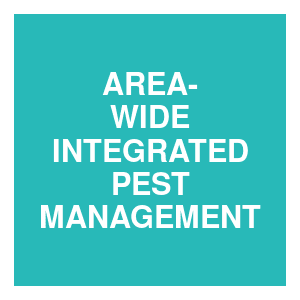
|
Combined sterile insect technique and incompatible insect technique: concept, study design, experience and lessons learned from a pilot suppression trial in ThailandKittayapong, P., AREA-WIDE INTEGRATED PEST MANAGEMENT: Development and Field Application, 2021.
Climate change, rapid global transport and land use change leading to urbanization and agricultural intensification have facilitated disease emergence in vulnerable regions like Southeast Asia, and also the global expansion of vectors and vector-borne diseases into other regions ... Keywords: cytoplasmic incompatibility, Drosophila simulans, mechanisms, spermiogenesis, wolbachia |
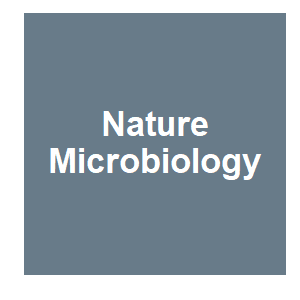
|
Wolbachia cifB induces cytoplasmic incompatibility in the malaria mosquito vectorK. L. Adams, D. G. Abernathy, B. C. Willett, E. K. Selland, M. A. Itoe and F. Catteruccia, Nature Microbiology, 6:1575-1582. 2021.
Wolbachia, a maternally inherited intracellular bacterial species, can manipulate host insect reproduction by cytoplasmic incompatibility (CI), which results in embryo lethality in crosses between infected males and uninfected females. CI is encoded by two prophage genes, cifA ... Keywords: cytoplasmic incompatibility, Drosophila simulans, mechanisms, spermiogenesis, wolbachia |

|
High Temperature Cycles Result in Maternal Transmission and Dengue Infection Differences Between Wolbachia Strains in Aedes aegyptiM. V. Mancini, T. H. Ant, C. S. Herd, J. Martinez, S. M. Murdochy, D. D. Gingell, E. Mararo, P. C. D. Johnson and S. P. Sinkins, mBio, e0025021. 2021.
Environmental factors play a crucial role in the population dynamics of arthropod endosymbionts, and therefore in the deployment of Wolbachia symbionts for the control of dengue arboviruses. The potential of Wolbachia to invade, persist, and block virus transmission depends in ... Keywords: cytoplasmic incompatibility, Drosophila simulans, mechanisms, spermiogenesis, wolbachia |

|
Novel Symbiotic Genome-Scale Model Reveals Wolbachia’s Arboviral Pathogen Blocking Mechanism in Aedes aegyptiN. E. Jiménez, Z. P. Gerdtzen, Á. Olivera-Nappa, J. C. Salgado and C. Conca, mBio, e0156321. 2021.Arboviral diseases such as Zika and Dengue have been on the rise mainly due to climate change, and the development of new treatments and strategies to limit their spreading is needed. The use of Wolbachia as an approach for disease control has motivated new research related to ... Keywords: cytoplasmic incompatibility, Drosophila simulans, mechanisms, spermiogenesis, wolbachia |

|
Structural and mechanistic insights into the complexes formed by Wolbachia cytoplasmic incompatibility factorsY. Xiao, H. Chen, H. Wang, M. Zhang, X. Chen, J. M. Berk, L. Zhang, Y. Wei, W. Li, W. Cui, F. Wang, Q. Wang, C. Cui, T. Li, C. Chen, S. Ye, L. Zhang, X. Ji, J. Huang, W. Wang, Z. Wang, M. Hochstrasser and H. Yang, Proceedings of the National Academy of Sciences, 118. 2021.
Wolbachia bacteria, inherited through the female germ line, infect a large fraction of arthropod species. Many Wolbachia strains manipulate host reproduction, most commonly through cytoplasmic incompatibility (CI). CI, a conditional male sterility, results when Wolbachia-infected ... Keywords: cytoplasmic incompatibility, Drosophila simulans, mechanisms, spermiogenesis, wolbachia |

|
A single mutation weakens symbiont-induced reproductive manipulation through reductions in deubiquitylation efficiencyJ. F. Beckmann, K. Van Vaerenberghe, D. E. Akwa and B. S. Cooper, Proceedings of the National Academy of Sciences, 118:e2113271118. 2021.
We show that a single naturally observed mutation weakens CI by reducing deubiquitylation. These discoveries help elucidate the molecular basis of symbiont-induced reproductive manipulations.Animals interact with microbes that affect their performance and fitness, including ... Keywords: cytoplasmic incompatibility, Drosophila simulans, mechanisms, spermiogenesis, wolbachia |

|
Discrete dynamical models on Wolbachia infection frequency in mosquito populations with biased release ratiosY. Shi and B. Zheng, Journal of Biological Dynamics, 2021.
We develop two discrete models to study how supplemental releases affect the Wolbachia spreading dynamics in cage mosquito populations. The first model focuses on the case when only infected males are released at each generation. This release strategy has been proved to be ... Keywords: cytoplasmic incompatibility, Drosophila simulans, mechanisms, spermiogenesis, wolbachia |

|
Two newly introduced Wolbachia endosymbionts induce cell host differences in competitiveness and metabolic responsesT. P. Li, S. S. Zha, C. Y. Zhou, X. Xia, A. A. Hoffmann and X. Y. Hong, Appl Environ Microbiol, Aem0147921. 2021.
Wolbachia endosymbionts can induce multiple reproductive manipulations in their hosts, with cytoplasmic incompatibility (CI) being one of the most common manipulations. The important agricultural pests, white-backed planthopper (Sogatella furcifera) and brown planthopper ... Keywords: cytoplasmic incompatibility, Drosophila simulans, mechanisms, spermiogenesis, wolbachia |
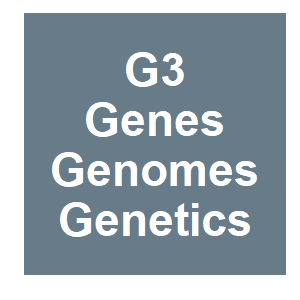
|
Diverse wMel variants of Wolbachia pipientis differentially rescue fertility and cytological defects of the bag of marbles partial loss of function mutation in Drosophila melanogasterJ. E. Bubnell, P. Fernandez-Begne, C. K. S. Ulbing and C. F. Aquadro, G3 Genes|Genomes|Genetics, 2021.
In Drosophila melanogaster, the maternally inherited endosymbiont Wolbachia pipientis interacts with germline stem cell genes during oogenesis. One such gene, bag of marbles (bam) is the key switch for differentiation and also shows signals of adaptive evolution for protein ... Keywords: cytoplasmic incompatibility, Drosophila simulans, mechanisms, spermiogenesis, wolbachia |

|
Millions of Lab-Grown Mosquitoes Are Being Released in GuangzhouF. Yiying, Sixth Tone, 2021.
Guangzhou is releasing millions of lab-engineered mosquitoes every day to neuter and prevent preexisting mosquitoes in the environment from spreading vector-borne diseases, local television station reported Saturday.The Guangzhou Wolbaki Biotech Co., Ltd., in partnership with the ... Keywords: cytoplasmic incompatibility, Drosophila simulans, mechanisms, spermiogenesis, wolbachia |

|
Sex separation of Aedes spp. mosquitoes for sterile insect technique application: a reviewB. M. Moran-Aceves, C. F. Marina, A. Dor, P. Liedo and J. Toledo, Entomologia Experimentalis Et Applicata, 10. 2021.
Separation of the sexes is necessary for the application of the sterile insect technique (SIT) in mosquitoes due to the hematophagous habits and disease vector activity of the females. In this review we analyze the history, current status, and future perspectives for the ... Keywords: cytoplasmic incompatibility, Drosophila simulans, mechanisms, spermiogenesis, wolbachia |
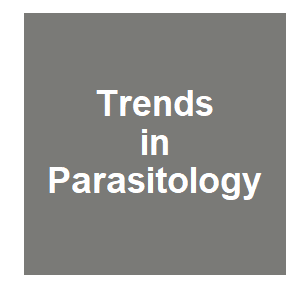
|
Wolbachia as translational science: controlling mosquito-borne pathogensE. P. Caragata, H. L. C. Dutra, P. H. F. Sucupira, A. G. A. Ferreira and L. A. Moreira, Trends in Parasitology, 2021.
In this review we examine how exploiting the Wolbachia?mosquito relationship has become an increasingly popular strategy for controlling arbovirus transmission. Field deployments of Wolbachia-infected mosquitoes have led to significant decreases in dengue virus incidence via high ... Keywords: cytoplasmic incompatibility, Drosophila simulans, mechanisms, spermiogenesis, wolbachia |

|
Manipulated Mosquitoes Cut Dengue by 77%T. Hayes, Healthcare Packaging, 2021.Dengue, a mosquito-borne viral disease, wasn’t that common 50 years ago. In fact, only nine countries had severe outbreaks. But since then, it’s been on a steady incline to the point that there are now 400 million infections a year that contribute to 22,000 deaths. ... Keywords: cytoplasmic incompatibility, Drosophila simulans, mechanisms, spermiogenesis, wolbachia |

|
Dengue Infections Can Be Sharply Reduced With Wolbachia BacteriaJ. Stone, Medscape, 2021.
A modestly titled new study released in the New England Journal of Medicine belies the extraordinary 77% protective efficacy reported for preventing dengue infections with Wolbachia-infected Aedes aegypti mosquitoes. A cluster-randomized clinical trial, the AWED ("Applying ... Keywords: cytoplasmic incompatibility, Drosophila simulans, mechanisms, spermiogenesis, wolbachia |

|
Making mosquitoes to fight mosquitoes to prevent dengueA. George, Times of India, 2021.
In 2017, Delhi Chief Minister Arvind Kejriwal tweeted that the national capitl needed to be made mosquito-free. The same year, his Kerala counterpart, Pinaray Vijayan, called a three-day state-wide cleanliness drive as hospitals filled with genue patients. Keywords: cytoplasmic incompatibility, Drosophila simulans, mechanisms, spermiogenesis, wolbachia |

|
Stable high-density and maternally inherited Wolbachia infections in Anopheles moucheti and Anopheles demeilloni mosquitoesT. Walker, S. Quek, C. L. Jeffries, J. Bandibabone, V. Dhokiya, R. Bamou, M. Kristan, L. A. Messenger, A. Gidley, E. A. Hornett, E. R. Anderson, C. Cansado-Utrilla, S. Hegde, C. Bantuzeko, J. C. Stevenson, N. F. Lobo, S. C. Wagstaff, C. A. Nkondjio, S. R., Current Biology, 31:2310. 2021.
Wolbachia, a widespread bacterium that can reduce pathogen transmission in mosquitoes, has recently been reported to be present in Anopheles (An.) species. In wild populations of the An. gambiae complex, the primary vectors of Plasmodium malaria in Sub-Saharan Africa, Wolbachia ... Keywords: cytoplasmic incompatibility, Drosophila simulans, mechanisms, spermiogenesis, wolbachia |

|
Dengue Fever Cut Down by 77% With Groundbreaking Bacteria-Armed MosquitoesM. Davis, The Science Times, 2021.
Scientists found that dengue fever cases have decreased by 77% in a groundbreaking trial that took place in Yogyakarta City, Indonesia. They used Wolbachia-infected mosquitoes that reduced their ability to spread the dengue fever. The team at the World Mosquito Program said that ... Keywords: cytoplasmic incompatibility, Drosophila simulans, mechanisms, spermiogenesis, wolbachia |

|
Mosquito ‘bacteria hack’ nearly eliminates dengue fever and could save millions of livesA. Wilkins, METRO, 2021.
Mosquitoes infected with a ‘miraculous’ bacteria have been shown to reduce dengue fever cases by 77%, in a groundbreaking new study. Scientists released mosquitoes infected with ‘Wolbachia’ bacteria into the Indonesian city of Yogyakarta – but only in certain zones. In ... Keywords: cytoplasmic incompatibility, Drosophila simulans, mechanisms, spermiogenesis, wolbachia |

|
‘Miraculous’ mosquito hack cuts dengue by 77%J. Gallagher, BBC, 2021.
Dengue fever cases have been cut by 77% in a "groundbreaking" trial that manipulates the mosquitoes that spread it, say scientists. They used mosquitoes infected with "miraculous" bacteria that reduce the insect's ability to spread dengue. The trial took place in Yogyakarta city, ... Keywords: cytoplasmic incompatibility, Drosophila simulans, mechanisms, spermiogenesis, wolbachia |

|
Modified mosquitoes reduce dengue cases by 77% in Indonesia experimentM. Fox, CNN, 2021.
An experiment to infect mosquitoes with bacteria that stop them from transmitting viruses appears to have helped reduced the spread of deadly dengue virus in Indonesia, researchers reported Wednesday. The modified mosquitoes thrived for three years, and cases of dengue were ... Keywords: cytoplasmic incompatibility, Drosophila simulans, mechanisms, spermiogenesis, wolbachia |

|
Efficacy of Wolbachia-Infected Mosquito Deployments for the Control of DengueA. Utarini, C. Indriani, R. A. Ahmad, W. Tantowijoyo, E. Arguni, M. R. Ansari, E. Supriyati, D. S. Wardana, Y. Meitika, I. Ernesia, I. Nurhayati, E. Prabowo, B. Andari, B. R. Green, L. Hodgson, Z. Cutcher, E. Rancès, P. A. Ryan, S. L. O’Neill, S. M. Dufau, New England Journal of Medicine, 384:2177-2186. 2021.
BACKGROUND Aedes aegypti mosquitoes infected with the wMel strain of Wolbachia pipientis are less susceptible than wild-type A. aegypti to dengue virus infection. METHODS We conducted a cluster-randomized trial involving releases of wMel-infected A. aegypti mosquitoes for the ... Keywords: cytoplasmic incompatibility, Drosophila simulans, mechanisms, spermiogenesis, wolbachia |

|
A Pivotal Mosquito Experiment Could Not Have Gone BetterE. Yong, The Atlantic, 2021.
The World Mosquito Program (WMP), a nonprofit that pioneered this technique, had run small pilot studies in Australia that suggested it could work. Utarini, who co-leads WMP Yogyakarta, has now shown conclusively that it does. Her team released Wolbachia-carrying mosquitoes in ... Keywords: cytoplasmic incompatibility, Drosophila simulans, mechanisms, spermiogenesis, wolbachia |

|
Mosquitoes armed with virus-fighting bacteria sharply curb dengue infections, hospitalizationsK. Servick, Science, 2021.
A strategy for fighting dengue fever with bacteria-armed mosquitoes has passed its most rigorous test yet: a large, randomized, controlled trial. Researchers reported today dramatic reductions in rates of dengue infection and hospitalization in areas of an Indonesian city where ... Keywords: cytoplasmic incompatibility, Drosophila simulans, mechanisms, spermiogenesis, wolbachia |

|
Study demonstrates ‘exciting potential’ of Wolbachia-infected mosquitoes to control dengueG. Gallagher, Healio, 2021.
The release of Wolbachia-infected mosquitoes led to a 77% reduction in the incidence of symptomatic dengue in an Indonesian city, according to researchers, who said the same approach could be used to fight other mosquito-borne diseases. The study tested a strain of Wolbachia ... Keywords: cytoplasmic incompatibility, Drosophila simulans, mechanisms, spermiogenesis, wolbachia |

|
Vector control: Discovery of Wolbachia in malaria vectorsP. A. Ross and A. A. Hoffmann, Current Biology, 31:R738-R740. 2021.
Wolbachia bacteria are being widely released for suppression of dengue transmitted by Aedes mosquitoes. Walker, Quek, Jeffries and colleagues present robust evidence for natural Wolbachia infections in malaria-vectoring Anopheles mosquitoes, paving the way for new ... Keywords: cytoplasmic incompatibility, Drosophila simulans, mechanisms, spermiogenesis, wolbachia |

|
Living in the endosymbiotic world of Wolbachia: A centennial reviewR. Kaur, J. D. Shropshire, K. L. Cross, B. Leigh, A. J. Mansueto, V. Stewart, S. R. Bordenstein and S. R. Bordenstein, Cell Host and Microbe, 29:879-893. 2021.
The most widespread intracellular bacteria in the animal kingdom are maternally inherited endosymbionts of the genus Wolbachia. Their prevalence in arthropods and nematodes worldwide and stunning arsenal of parasitic and mutualistic adaptations make these bacteria a biological ... Keywords: cytoplasmic incompatibility, Drosophila simulans, mechanisms, spermiogenesis, wolbachia |

|
Mechanistically comparing reproductive manipulations caused by selfish chromosomes and bacterial symbiontsE. Dalla Benetta, O. S. Akbari and P. M. Ferree, Heredity, 126:707-716. 2021.
Insects naturally harbor a broad range of selfish agents that can manipulate their reproduction and development, often leading to host sex ratio distortion. Such effects directly benefit the spread of the selfish agents. These agents include two broad groups: bacterial symbionts ... Keywords: cytoplasmic incompatibility, Drosophila simulans, mechanisms, spermiogenesis, wolbachia |
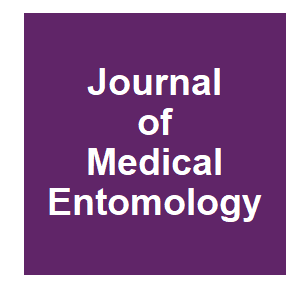
|
When More is Less: Mosquito Population Suppression Using Sterile, Incompatible and Genetically Modified Male MosquitoesS. L. Dobson, Journal of Medical Entomology, 58:1980-1986. 2021.
The current review of the Sterile Insect Technique (SIT) is motivated by new technologies and the recent renaissance of male release field trials, which is driving an evolution in mosquito control and regulation. Practitioners that are releasing male mosquitoes would do well to ... Keywords: cytoplasmic incompatibility, Drosophila simulans, mechanisms, spermiogenesis, wolbachia |

|
How to engage communities on a large scale? Lessons from World Mosquito Program in Rio de Janeiro, Brazil [version 2; peer review: 1 approved, 2 approved with reservations]G. B. Costa, R. Smithyman, S. L. O'Neill and L. A. Moreira, Gates Open Research, 2021.
Here we discuss and analyse the framework for community engagement implemented by the WMP in Brazil, during the large-scale deployment of the method in the municipalities of Niterói and Rio de Janeiro, Brazil. Our experience indicates that the community engagement work for ... Keywords: cytoplasmic incompatibility, Drosophila simulans, mechanisms, spermiogenesis, wolbachia |

|
Project Wolbachia: Residents are killing the ‘helpful’ mosquitoes, which can be a nuisanceT. J. Cheng, today, 2021.
In 2019, Dr Amy Khor, then Senior Minister of State for the Environment and Water Resources, said that there was a 90 per cent suppression rate at study sites in Tampines and Yishun from February to November that year. However, certain public housing estates under the project ... Keywords: cytoplasmic incompatibility, Drosophila simulans, mechanisms, spermiogenesis, wolbachia |

|
GeneConvene Webinar Series on: Genetic BiocontrolDavid O'Brochta and Hector Quemada, , 2021.
In the mid 20th century various ideas emerged concerning how genetics and genetic principles could be directly applied to age-old problems of managing insects that threaten food security and public health. This series of webinars will explore the current state-of-the-art of what ... Keywords: cytoplasmic incompatibility, Drosophila simulans, mechanisms, spermiogenesis, wolbachia |

|
Next-generation tools to control biting midge populations and reduce pathogen transmissionP. Shults, L. W. Cohnstaedt, Z. N. Adelman and C. Brelsfoard, Parasites and Vectors, 14:31. 2021.
Biting midges of the genus Culicoides transmit disease-causing agents resulting in a significant economic impact on livestock industries in many parts of the world. Localized control efforts, such as removal of larval habitat or pesticide application, can be logistically ... Keywords: cytoplasmic incompatibility, Drosophila simulans, mechanisms, spermiogenesis, wolbachia |

|
Wolbachia strain wAlbB maintains high density and dengue inhibition following introduction into a field population of Aedes aegyptiN. A. Ahmad, M.-V. Mancini, T. H. Ant, J. Martinez, G. M. R. Kamarul, W. A. Nazni, A. A. Hoffmann and S. P. Sinkins, Philosophical Transactions of the Royal Society B: Biological Sciences, 376:20190809. 2020.
Here, wAlbB-carrying Ae. aegypti collected from the field 20 months after the cessation of releases showed no reduction in Wolbachia density or tissue distribution changes compared to a wAlbB laboratory colony. The wAlbB strain continued to induce complete unidirectional ... Keywords: cytoplasmic incompatibility, Drosophila simulans, mechanisms, spermiogenesis, wolbachia |

|
New insect species made via genetic engineeringL. Leffer, SCIENCELINE, 2020.
A biotech fast-forward button for evolution is on the horizon. Researchers say they have used a novel genetic engineering method to create several new species of fruit fly in the lab for the first time — an achievement which might help put a future without malaria and other ... Keywords: cytoplasmic incompatibility, Drosophila simulans, mechanisms, spermiogenesis, wolbachia |

|
‘A plague to be reckoned with’: UMN research creates a buzz with invasive fruit fly researchB. Most, The Minnesota Daily, 2020.
n early November, assistant professor Mike Smanski published an article about a new breakthrough in this research, demonstrating for the first time this kind of genetic engineering was possible in the common fruit fly. This shows that researchers could engineer this work into ... Keywords: cytoplasmic incompatibility, Drosophila simulans, mechanisms, spermiogenesis, wolbachia |
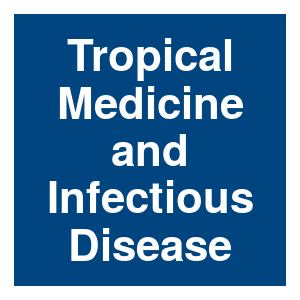
|
Vector-Focused Approaches to Curb Malaria Transmission in the Brazilian Amazon: An Overview of Current and Future Challenges and StrategiesE. M. Rocha, R. D. Katak, J. C. de Oliveira, M. D. Araujo, B. C. Carlos, R. Galizi, F. Tripet, O. Marinotti and J. A. Souza, Tropical Medicine and Infectious Disease, 5. 2020.
Here we present an overview on both conventional and novel promising vector-focused tools to curb malaria transmission in the Brazilian Amazon. If well designed and employed, vector-based approaches may improve the implementation of malaria-control programs, particularly in ... Keywords: cytoplasmic incompatibility, Drosophila simulans, mechanisms, spermiogenesis, wolbachia |

|
Stable Introduction of Plant-Virus-Inhibiting Wolbachia into Planthoppers for Rice ProtectionJ. T. Gong, Y. Li, T. P. Li, Y. Liang, L. Hu, D. Zhang, C. Y. Zhou, C. Yang, X. Zhang, S. S. Zha, X. Z. Duan, L. A. Baton, X. Y. Hong, A. A. Hoffmann and Z. Xi, Current Biology, 30:4837-4845.e5. 2020.
Progress has been made in developing the maternally inherited endosymbiotic bacterium Wolbachia as a tool for protecting humans from mosquito-borne diseases. In contrast, Wolbachia-based approaches have not yet been developed for the protection of plants from insect pests and ... Keywords: cytoplasmic incompatibility, Drosophila simulans, mechanisms, spermiogenesis, wolbachia |
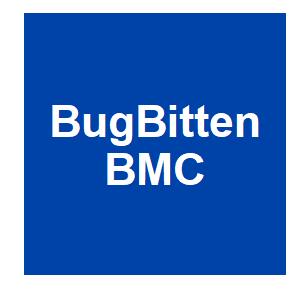
|
Cytoplasmic incompatibility: an autocidal mechanism for mosquito population controlV. Dev, BugBitten BMC, 2020.
Cytoplasmic incompatibility resulting in non-reciprocal fertility is a naturally occurring phenomenon, but remains unexplored to greater extent for the control of insect vector populations. This mechanism deserves priority for mosquito control and reducing disease transmission, ... Keywords: cytoplasmic incompatibility, Drosophila simulans, mechanisms, spermiogenesis, wolbachia |

|
Modeling the suppression dynamics of Aedes mosquitoes with mating inhomogeneityM. Huang and L. Hu, Journal of Biological Dynamics, 14:656-678. 2020.
In this work, we introduce a delay differential equation model with mating inhomogeneity to discuss mosquito population suppression based on Wolbachia. Our analyses show that the wild mosquitoes could be eliminated if either the adult mortality rate exceeds the threshold δ∗A ... Keywords: cytoplasmic incompatibility, Drosophila simulans, mechanisms, spermiogenesis, wolbachia |

|
The Biochemistry of Cytoplasmic Incompatibility Caused by Endosymbiotic BacteriaH. Chen, M. Zhang and M. Hochstrasser, Genes, 11. 2020.
Many species of arthropods carry maternally inherited bacterial endosymbionts that can influence host sexual reproduction to benefit the bacterium. The most well-known of such reproductive parasites is Wolbachia pipientis. Wolbachia are obligate intracellular ... Keywords: cytoplasmic incompatibility, Drosophila simulans, mechanisms, spermiogenesis, wolbachia |

|
Genetic Biocontrol – An OverviewGeneConvene Global Collaborative,, GeneConvene Global Collaborative, 2020.
This video explains what genetic biocontrol is and surveys various technologies that can be consider genetic biocontrol technologies. It offers a conceptual organization of the various technologies based on the potential of genetic biocontrol organisms to persist and spread in ... Keywords: cytoplasmic incompatibility, Drosophila simulans, mechanisms, spermiogenesis, wolbachia |

|
Wolbachia transinfections in Culex quinquefasciatus generate cytoplasmic incompatibilityT. H. Ant, C. Herd, F. Louis, A. B. Failloux and S. P. Sinkins, Insect Molecular Biology, 29:1-8. 2020.
Culex quinquefasciatus is an important mosquito vector of a number of viral and protozoan pathogens of humans and animals, and naturally carries the endosymbiont Wolbachia pipientis, strain wPip. Wolbachia are used in two distinct vector control strategies: firstly, population ... Keywords: cytoplasmic incompatibility, Drosophila simulans, mechanisms, spermiogenesis, wolbachia |

|
The toxin–antidote model of cytoplasmic incompatibility: Genetics and evolutionary implicationsBeckmann, J. F., M. Bonneau, H. Chen, M. Hochstrasser, D. Poinsot, H. Merçot, M. Weill, M. Sicard and S. Charlat, Trends in Genetics, 35:175-185. 2019.
Wolbachia bacteria inhabit the cells of about half of all arthropod species, an unparalleled success stemming in large part from selfish invasive strategies. Cytoplasmic incompatibility (CI), whereby the symbiont makes itself essential to embryo viability, is the most common of ... Keywords: cytoplasmic incompatibility, Drosophila simulans, mechanisms, spermiogenesis, wolbachia |

|
Genetic control of Invasive carpMAISRC, Minnesota Aquatic Invasive Species Research Center, 2019.
This project focuses on a novel method of biocontrol for common carp which will complement existing technologies by introducing a synthetic species-like barrier to reproduction. Researchers will use programmable transcription activators to drive lethal embryonic overexpression of ... Keywords: cytoplasmic incompatibility, Drosophila simulans, mechanisms, spermiogenesis, wolbachia |

|
The toxin–antidote model of cytoplasmic incompatibility: Genetics and evolutionary implicationsBeckmann, JFB, Manon; Chen, Hongli; Hochstrasser, Mark; Poinsot, Denis; Merçot, Hervé; Weill, Mylène; Sicard, Mathieu; Charlat, Sylvain, Trends in Genetics, 35:175-185. 2019.
Wolbachia bacteria inhabit the cells of about half of all arthropod species, an unparalleled success stemming in large part from selfish invasive strategies. Cytoplasmic incompatibility (CI), whereby the symbiont makes itself essential to embryo viability, is the most common of ... Keywords: cytoplasmic incompatibility, Drosophila simulans, mechanisms, spermiogenesis, wolbachia |

|
One prophage WO gene rescues cytoplasmic incompatibility in Drosophila melanogasterShropshire, J. D., J. On, E. M. Layton, H. Zhou and S. R. Bordenstein, Proceedings of the National Academy of Sciences, 115:4987. 2018.
The World Health Organization recommended pilot deployment of Wolbachia-infected mosquitoes to curb viral transmission to humans. Releases of mosquitoes are underway worldwide because Wolbachia can block replication of these pathogenic viruses and deterministically spread by a ... Keywords: cytoplasmic incompatibility, Drosophila simulans, mechanisms, spermiogenesis, wolbachia |

|
Evolutionary genetics of cytoplasmic incompatibility genes cifA and cifB in prophage WO of WolbachiaLindsey, A. R. I., D. W. Rice, S. R. Bordenstein, A. W. Brooks, S. R. Bordenstein and I. L. G. Newton, Genome Biology and Evolution, 10:434-451. 2018.
The bacterial endosymbiont Wolbachia manipulates arthropod reproduction to facilitate its maternal spread through host populations. The most common manipulation is cytoplasmic incompatibility (CI): Wolbachia-infected males produce modified sperm that cause embryonic mortality, ... Keywords: cytoplasmic incompatibility, Drosophila simulans, mechanisms, spermiogenesis, wolbachia |

|
A Wolbachia deubiquitylating enzyme induces cytoplasmic incompatibilityBeckmann, J. F., J. A. Ronau and M. Hochstrasser, Nature Microbiology, 2:17007. 2017.
Wolbachia are obligate intracellular bacteria1 that infect arthropods, including approximately two-thirds of insect species2. Wolbachia manipulate insect reproduction by enhancing their inheritance through the female germline. The most common alteration is cytoplasmic ... Keywords: cytoplasmic incompatibility, Drosophila simulans, mechanisms, spermiogenesis, wolbachia |
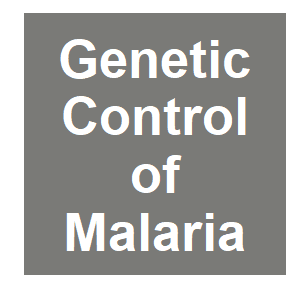
|
Concept and history of genetic controlScott, M. J. and Benedict, M. Q., Genetic Control of Malaria and Dengue, 2:31-54. 2016.
Genetic control of insects is an established method, mainly for insects that are important crop and veterinary pests such as medflies and screwworm. Efforts to use the same technologies against insects of medical importance, especially mosquitoes, have had limited success. The ... Keywords: cytoplasmic incompatibility, Drosophila simulans, mechanisms, spermiogenesis, wolbachia |

|
Selfish genes in mosquitosC. F. Curtis, Nature, 357:450. 1992.
Hurst and coUeagues1.2 state that "within any population of [the mosquito] Culex pipiens there are two sorts of individual, those that bear/harbour Wolbachia [bacteria] and those that do not". But, according to Yen and Barr3, all wild-type C. pipiens appropriately examined ... Keywords: cytoplasmic incompatibility, Drosophila simulans, mechanisms, spermiogenesis, wolbachia |

|
Population replacement in Culex-fatigans by means of cytoplasmic incompatibility .2. Field cage experiments with overlapping generationsC. F. Curtis, Bulletin of the World Health Organization, 53:107-119. 1976.
Three experiments were carried out in field cages to test the principle of " transport" of a desirable gene or chromosome into a wild Culex fatigans population as a result of the sterility in cross-matings associated with cytoplasmic incompatibility. Cycling populations of Delhi ... Keywords: cytoplasmic incompatibility, Drosophila simulans, mechanisms, spermiogenesis, wolbachia |

|
Population replacement in Culex fatigens by means of cytoplasmic incompatibility. Laboratory experiments with non-overlapping generationsC. F. Curtis and T. Adak, Bulletin of the World Health Organization, 51:249-255. 1974.
Bidirectional cytoplasmic incompatibility in the Culex pipiens complex appears to provide a mechanism for the replacement of a wild population by a strain refractory to filaria or a strain made partly sterile by a translocation. As a preliminary test of the feasibility of the ... Keywords: cytoplasmic incompatibility, Drosophila simulans, mechanisms, spermiogenesis, wolbachia |

|
Eradication of Culex pipiens fatigans through cytoplasmic incompatibility.H. Laven, Nature, 216:383. 1967.
Culex pipiens fatigans is the chief vector of filariasis in south-east Asia. Urbanization has often caused the numbers of this mosquito-and with it the danger of filariasis infection-to increase alarmingly. The natural vigour, tolerance and fast development of resistance to ... Keywords: cytoplasmic incompatibility, Drosophila simulans, mechanisms, spermiogenesis, wolbachia |

Contact
David O’Brochta
Foundation for the
National Institutes of Health
geneconvenevi@fnih.org
RSS

